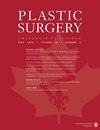一家三级医院中心的手术等待时间和住院时间对烧伤伤口感染及相关并发症发生率的影响:十年经验
IF 0.7
4区 医学
Q4 SURGERY
引用次数: 0
摘要
导言:入院的烧伤患者需要及时治疗和缩短住院时间,以避免院内感染和相关并发症。本研究旨在确定在一家三甲医院烧伤中心就诊的中度烧伤成人患者中,首次手术时间和总住院时间对BWI和相关并发症发生率的影响。方法通过回顾性病历审查,确定了 2011 年 1 月至 2021 年 1 月期间入住烧伤科的烧伤患者。记录了BWI和并发症的发生率。进行单变量逻辑回归,显著性设定为 P < .05。结果:共有 171 名患者参与了研究。平均年龄为 50.8 岁(94-18 岁),女性 64 人(37.4%)。平均手术等待时间和总住院时间分别为 2.6 天(SD = 2.5;1-15 天)和 18.6 天(SD = 16.0;1-125 天)。确切地说,47 名患者(27.5%)烧伤创面培养呈阳性,23 名患者(13.5%)出现临床烧伤创面并发症。手术等待时间对BWI(OR = 0.97,P = .72)或相关并发症(OR = 0.97,P = .61)的发生率无明显影响。总住院时间与BWI(OR = 1.05,P = .001)和相关并发症(OR = 1.02,P = .03)的发生率有明显关系。结论:延迟手术可能不是烧伤患者发生 BWI 和相关并发症的重要风险因素。一半的烧伤创面培养阳性与客观的临床感染和后续并发症有关。不过,总住院时间可能对临床很重要。本文章由计算机程序翻译,如有差异,请以英文原文为准。
The Impact of Surgical Wait Time and Hospital Stay on the Incidence of Burn Wound Infection and Related Complications at a Single Tertiary Hospital Centre: A 10-Year Experience
Introduction: Admitted patients with burn injuries require prompt treatment and shorter hospital stays to avoid hospital-acquired infections and associated complications. This study aimed to determine the impact of time to the first surgery, and total length of hospital stay on the incidence of BWI and associated complications in adult patients with moderate burn injuries at a single tertiary hospital burn center. Methods: A retrospective chart review identified burn patients admitted to the Burn Unit between January 2011 and January 2021. The incidences of BWI and complications were documented. Univariate logistic regressions were performed, with significance set at P < .05. Results: A total of 171 patients were included in the study. The mean age was 50.8 years (range, 94-18 years), with 64 (37.4%) females. The mean wait time for surgery and total hospital stay was 2.6 days (SD = 2.5; 1-15 days) and 18.6 days (SD = 16.0; 1-125 days), respectively. Precisely, 47 patients (27.5%) were associated with positive burn wound cultures, with 23 patients (13.5%) experiencing clinical burn wound complications. Wait time to surgery did not significantly impact the incidence of BWI (OR = 0.97, P = .72) or related complications (OR = 0.97, P = .61). Total hospital stay was significantly associated with the incidence of BWI (OR = 1.05, P < .001) and related complications (OR = 1.02, P = .03). Conclusions: Delay to surgery may not be a significant risk factor of BWI and related complications in patients with burn injuries. Half of positive burn wound cultures are associated with objective clinical infection and subsequent complications. However, total hospital stay may be clinically important.
求助全文
通过发布文献求助,成功后即可免费获取论文全文。
去求助
来源期刊

Plastic surgery
Medicine-Surgery
CiteScore
1.70
自引率
0.00%
发文量
73
期刊介绍:
Plastic Surgery (Chirurgie Plastique) is the official journal of the Canadian Society of Plastic Surgeons, the Canadian Society for Aesthetic Plastic Surgery, Group for the Advancement of Microsurgery, and the Canadian Society for Surgery of the Hand. It serves as a major venue for Canadian research, society guidelines, and continuing medical education.
 求助内容:
求助内容: 应助结果提醒方式:
应助结果提醒方式:


